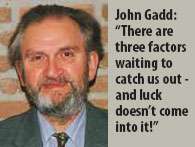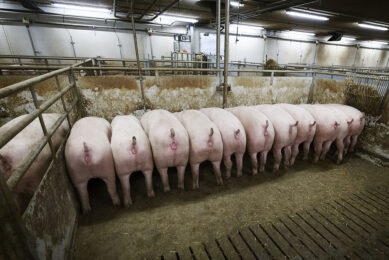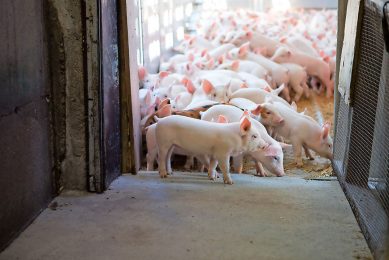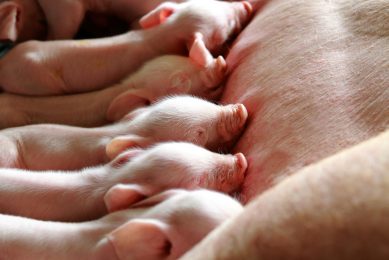What the textbooks don’t tell you about… Hyperprolific gilts – defusing the ticking timebomb, part I

By John Gadd
A friend of mine, major Ted Poole, was one of those very brave bomb disposal men who himself made safe many hundreds of mines and over 25 unexploded bombs. Fortunately, due to his skill and experience (plus ‘a bit of luck’, he said), Ted eventually retired and died peacefully in his bed. He told me that towards the end of his career, anti-personnel mines started to be booby-trapped to contain a second fuse which was timed to explode as the initial charge was being made safe.
Why the analogy with the hyperprolific gilt? Because in our case there are three trigger factors waiting to catch us out, and in our case luck doesn’t come into it! So I find from those farm call-outs where I have been asked to deal with the following problems. Our triggers are…
- The second, and occasionally the third, litter fallaway – both are aggravated by
- Increased returns and a longer weaning to service interval.
- A shorter sow productive life (SPL). Sows not lasting nearly as long as they should do. All three can be laid firmly at the door of the gilt.
My records from farms visited since 2006 suggest that the first two reduced weaner capacity by 50 kg and the shorter productive life by another 86 kg, totalling 136 kg in all, some 27% less production per sow, all gone to waste.
“What is ‘weaner capacity?,” you ask.
Weaner capacity
In case you need reminding (I wrote about it here a while ago), weaner capacity, a term pioneered by Hypor, is the weight of weaners produced by a sow in her lifetime. The target today is 500 kg and in practice is hardly altered between the common weaning ages of 21 to 30 days.
Weaner capacity is a useful yardstick – fully qualified to join the collection of ‘new terms’ I have been suggesting to pig producers for 20 years (see Table 1).
Why is weaner capacity a good yardstick? The cost of a hyperprolific gilt is nowhere near as cheap as it used to be and anyway a replacement gilt always has been expensive to rear properly to first service – now advised at 240 days.
Having willingly made this considerable investment in money and skill, the typical producer only manages to squeeze about 275 kg of weaner capacity out of this valuable asset before she is for the chop. What a waste! 27% of hard-won capital squandered. Nearly half of that animal’s improved genetic capability for production foregone for nil income.
The two triggers to the timebomb
Of course we have all experienced the second litter fallaway. It is as familiar today as the ‘thin sow syndrome’ was in the past. Trouble is hyperprolificacy – the genetic ability to farrow much larger first litters – is outstripping the gilt’s ability to rear them.
If the rearing load is not sufficiently lifted off her shoulders by a variety of measures, we create not so much a ‘thin sow syndrome’ as a ‘shattered sow syndrome’ and this manifests itself by a poor second litter, certainly in numbers born alive and viability. Trouble is – again – with these very prolific gilts the problem seems to be becoming more acute and the sensible protective managemental measures are in danger of not being sufficient in the long term. So with hyperprolifics the problem looks to be getting worse – the trigger is becoming more sensitive.
Remedy
Of course the eight or so management measures we can employ to protect her from this internal damage to her reproductivity are essential, but uprated nutrition – if needs be from well before selection and up to first service at 240 days – is another major contributor to sustaining the early performance of the hyperprolific sow-to-be and then continuing it into more big litters subsequently. So you need to get in early, from about 60 kg, with a gilt developer feed. Different in not only their major nutrient-specifications but also in some of the micronutrients provided – a whole new area of research into young sow feeding is currently in train. But it doesn’t stop there, as it should be followed by a gilt (technically a first-litter sow) lactation diet, which again is different from the sow lactation feed we have been used to. The two together – load easing and redesigned nutrition, will defuse the first trigger effectively.
Booby-trap
But what about the ‘booby-trap’ of the second trigger, that disastrously short sow productive life, which is catching so many out? I’ll have some suggestions on how to recognise it well in advance (a.k.a. Ted Poole) and how to neutralise it, next month.











